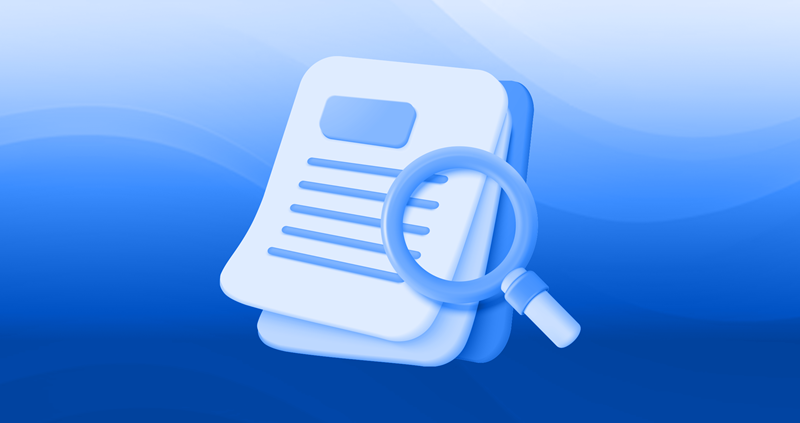What are the different types of bank accounts and their features?
Discover the most common types of bank accounts in the U.S., how they work, and how to choose the right one for you.
Types of bank accounts: From everyday checking accounts to long-term CDs, there are various types of accounts in banks across the U.S. for you to choose from.
How to pick one: Choosing the right one for you means comparing different types of bank accounts and their features and benefits.
What to consider: Understanding your financial goals and how often you need access to your money will help you decide which account type best fits your needs.
What are the different types of bank accounts?
In the United States, you’ll find various types of bank accounts for different financial needs, each offering their own benefits and features. Whether you’re looking for an everyday account for daily spending or a high-interest account for long-term saving, there are plenty of options, and it’s important to understand the types of accounts that banks offer so you can find the right one for you.
So, what are the types of bank accounts you can choose from? The most common include checking accounts, savings accounts, high-yield savings accounts, money market accounts, and certificates of deposit (CDs).
In the section below, you’ll find the different types of bank accounts explained in simple terms to help you better understand their features and benefits.
Checking account
A checking account is a bank account used for everyday spending and transactions. Many people get paid into their checking account and use it to manage daily expenses, withdraw money, and pay bills.
You can typically deposit funds into a checking account by making an online transfer or depositing cash or checks at a branch, and you’ll be able to use a debit or credit card as part of your account.
A checking account’s interest rate is typically low, or even zero, so it may not be the best account for building up savings. However, it offers a lot of flexibility, including unlimited withdrawals, low (or zero) fees, overdrafts, and the ability to set up automated payments. For this reason, it’s usually the main type of bank account that people open.
Savings account
While a checking account can be useful for everyday transactions, a savings account can be suitable if you want to save money for a specific goal or build interest over time.
A regular savings account allows you to grow your savings while still being able to access funds should you need to. The interest rate you receive, account fees, and any withdrawal restrictions or minimum balance requirements will vary from bank to bank, so it’s important to do your research to understand the account’s key features.
You can read more about the differences between a checking and savings account.
High-yield savings account (HYSA)
High-yield savings accounts usually offer higher interest rates than regular savings accounts. However, you may need to maintain a minimum balance to receive the advertised interest rate.
This type of savings account typically offers flexibility as you can deposit and withdraw money, but there may be limits on the number of withdrawals you can make per month or year. Some banks may also require high minimum deposits and charge fees if you dip below the minimum (Raisin does not).
Money market deposit account
Money market deposit accounts work similarly to regular savings accounts, with some additional features. They often have high or tiered interest rates, where you’ll have to maintain your balance at a particular level to receive the highest interest rate.
Some money market accounts will give you a debit card or paper checks so you can access funds in the account, but there may be limits on how many transfers and withdrawals you can make. Some banks also require high minimum deposits and charge fees if you dip below the minimum.
Money market deposit accounts on the Raisin marketplace do not charge fees.
Certificate of Deposit (CD)
Certificates of Deposit, also known as CD accounts, are deposit accounts that allow you to earn a competitive level of interest in exchange for locking your money away for a set period.
CDs typically offer some of the highest interest rates of all banking deposit products. Your funds will be locked for a fixed term of your choosing (typically between three months and five years), and you won’t have access to your funds until the account matures. Therefore, this type of account may not be suitable if you think you’ll need access to your money or want to make withdrawals.
Comparing different types of bank accounts
Opening a new bank account can feel confusing (especially now that you know how many types of bank accounts there are!) The table below compares the most common types of bank accounts in the USA to help you understand key differences at a glance.
Type of bank account | Checking Accounts | Savings Accounts | High-Yield Savings Accounts | Money Market Accounts | Certificates of Deposit (CDs) |
Purpose | Daily spending and transactions | General saving | Saving with higher interest | Saving, sometimes with check-writing privileges | Long-term saving |
Minimum balance requirements | Often none or low | Low | Varies by bank | Varies by bank, but usually high | Varies by bank |
Interest rate | Low or none | Low to medium | High | Medium to high | Highest |
Access to funds | Unlimited | Varies by bank | Varies by bank | Varies by bank | No access until maturity |
Best for | Everyday spending, bill management and budgeting | Short-term savings goals | Earning enhanced interest on savings, emergency funds and medium or long-term savings | Higher interest for medium-term saving goals | Saving for a fixed term, when you’re sure you won’t need access to the funds during the set period |
How to choose the right type of bank account for you
Choosing the right bank account for you depends on your financial goals and personal circumstances, including how often you need to access your money. Here are some key factors to consider when choosing a bank account, with examples.
Savings goals: Consider what you’re saving for and how long this might take. Perhaps it’s a short-term goal like a wedding or a vacation, a long-term goal like a house or retirement, or maybe you’d simply like to build up an emergency or rainy day fund.
Interest rates: Look for competitive APYs, and compare online and traditional banks to find the best offers.
Access to funds: Will you need regular access to your savings, or are you happy not to have access to your funds for a set period? Look for any withdrawal restrictions per month or year.
Balance requirements: Some accounts have no minimum balance requirements, while others may require $1,000 or more to open an account or avoid fees.
Fees and restrictions: Do your research and look for withdrawal limits, monthly maintenance fees, and early withdrawal penalties.
FDIC insurance: Always ensure that any bank offering an account is insured by the FDIC (or the NCUA if it’s a credit union).
Choosing the right account for you will require you to evaluate key features and decide what’s most important to you. For example, a savings account with the highest APY on the market may not be right for you if there are withdrawal restrictions and you know you’ll need regular access to your money.
Can I have more than one bank account?
Yes, there’s no set amount of bank accounts you can have. You may decide that you want to have a few types of bank accounts for different needs, for example:
A checking account, which you get paid into and use to pay bills and withdraw money for day-to-day spending.
A regular savings account or a high-yield savings account that you can build up and use for emergencies, like if your car breaks down.
A CD account that you open with a lump sum to save for a future event, like a wedding or a vacation.
In short, it’s up to you, and you may need different types of bank accounts as you go through life. Although there isn’t a maximum amount of bank accounts you’re allowed to have, you might also consider what will be manageable for you. A savings marketplace like Raisin makes it easy to manage multiple bank account categories in one place, with only one login.
What is the best bank account in the USA?
The best bank account in the U.S. will differ from person to person, depending on what you need it for, your savings goals, and your banking needs. For example, some savers might consider the best type of bank account to be the one with the highest interest rate, while others may prefer accounts with unlimited access to their money.
In general, though, popular bank accounts typically offer the following features:
Competitive interest rate
Low or no fees
No withdrawal limits
No minimum balance requirements
Save with Raisin
Looking for a smart way to manage your money across all types of bank accounts? At Raisin, you can access bank accounts from a variety of banks and credit unions for free. Our marketplace makes it easy to compare, open, and manage several bank accounts in one place. Explore all the accounts and get started today.
The above article is intended to provide generalized financial information designed to educate a broad segment of the public; it does not give personalized tax, investment, legal, or other business and professional advice. Before taking any action, you should always seek the assistance of a professional who knows your particular situation for advice on taxes, your investments, the law, or any other business and professional matters that affect you and/or your business.


